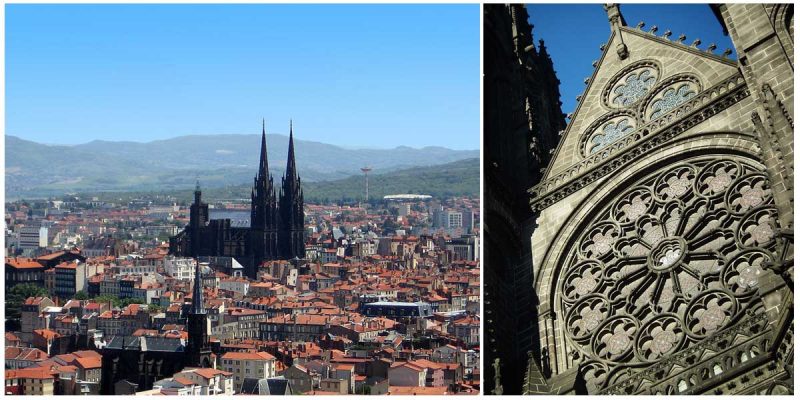Clermont-Ferrand Cathedral (the Cathédrale Notre-Dame-de-l’Assomption) is a Gothic cathedral and French national monument which was built during the 13th and 14th centuries.
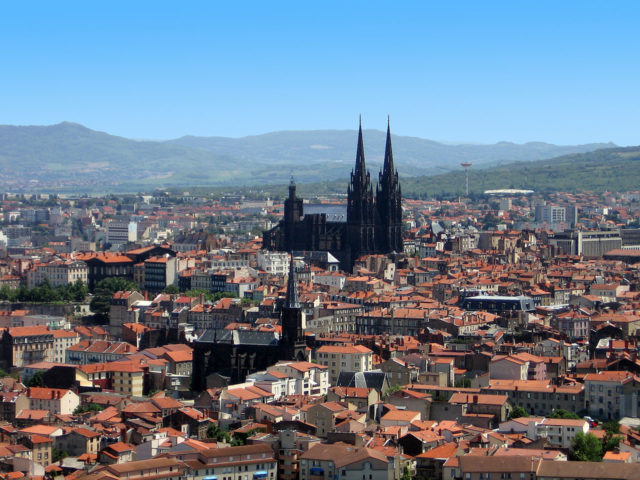
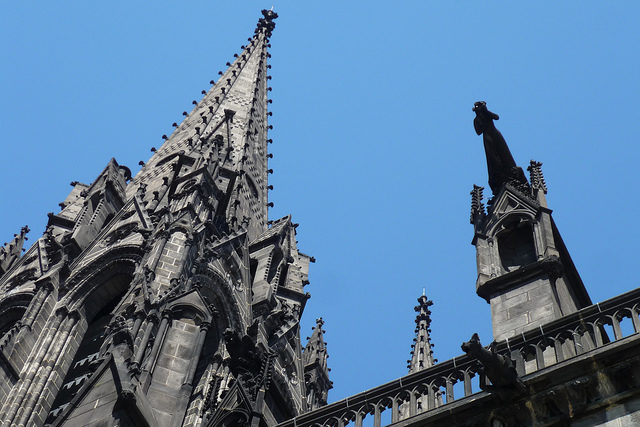
It is built entirely from black lava stone, which makes it highly distinctive, and visible from a great distance. It has beautiful medieval stained glass windows, many Gothic wall paintings, and a 10th-century crypt. Its twin spires are 108 meters tall, and tower above the town’s rooftops.
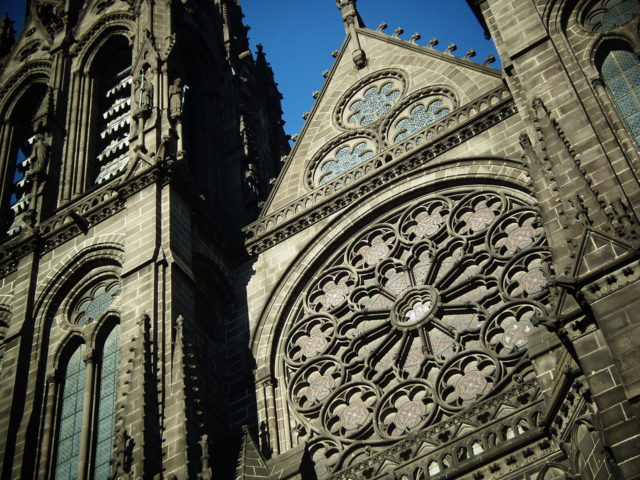
The cathedral is the third Christian church to be erected on the spot, upon remnants of the previous structures. Construction on the present cathedral began in 1246 under Bishop Hugues de la Tour, a friend of King Louis IX.
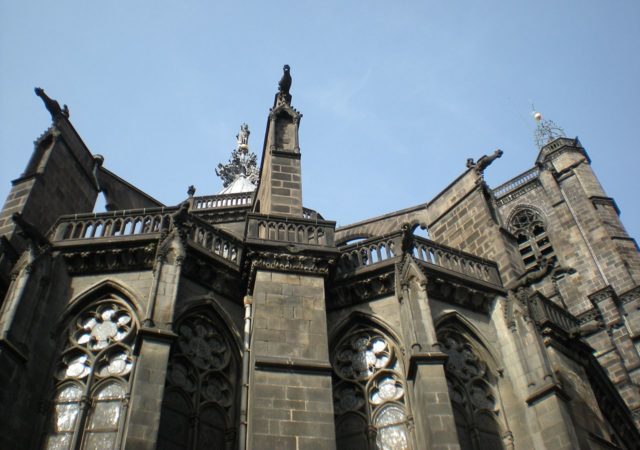
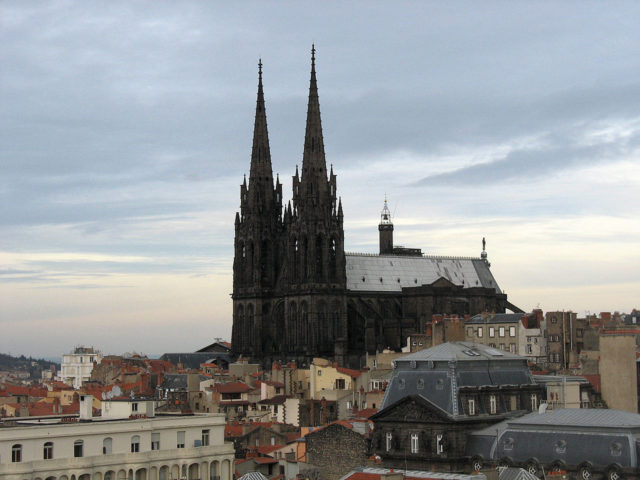
The cathedral was designed by architect Jean Deschamps and it was modeled after the great Gothic cathedrals of northern France.
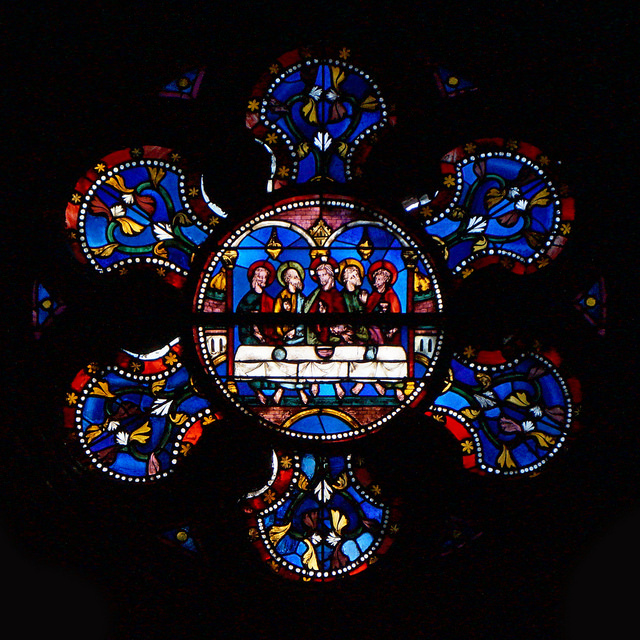
Deschamps was inspired by Beauvais and Amiens; he made original plans in which the windows do not occupy all the available space between the supports and do not have any bracing arches, the ribs directly penetrate under the arch, the choir-rotunda pillars’ elliptical plan allows all the light from the apsidal windows to penetrate into the sanctuary, and flying buttresses allow ingenious débords into the nave aisles. The choir was finished in 1273 and the transept was done by the architect’s death in 1295.
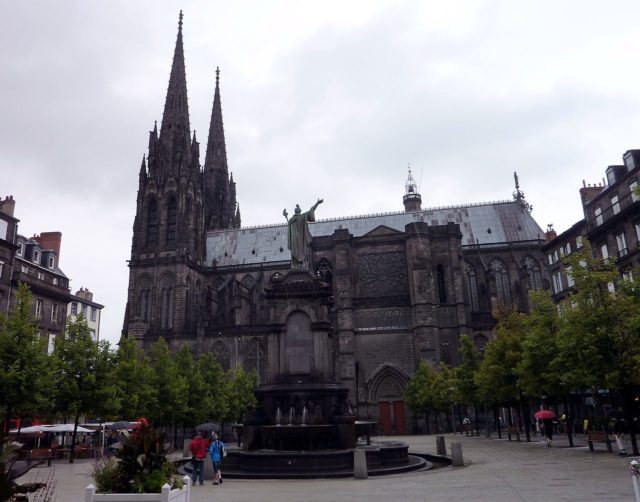
Thanks to the efforts of a persuasive clergyman, the Benedictine Verdier-Latour the cathedral was largely spared the ravages of the French Revolution. He persuaded them that it would be an excellent gathering place for the people. Only the rood screen, altar, choir stalls and furniture were destroyed.
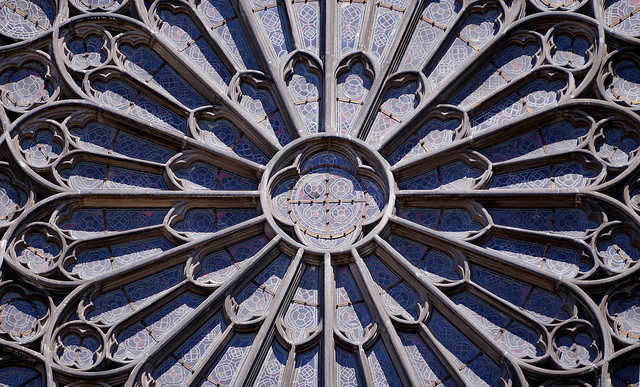
Some of the best-preserved medieval frescoes in France are kept in this cathedral and the oldest part of the cathedral is the crypt, which actually survived from the previous incarnation of the church.
